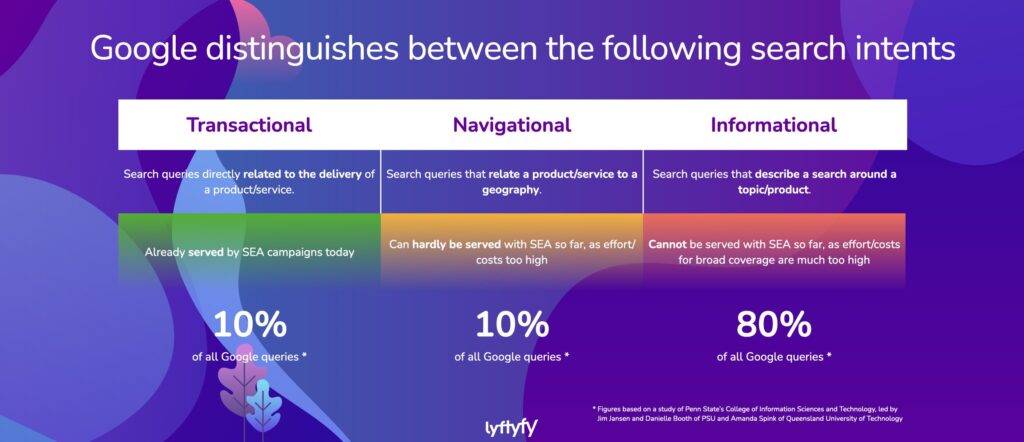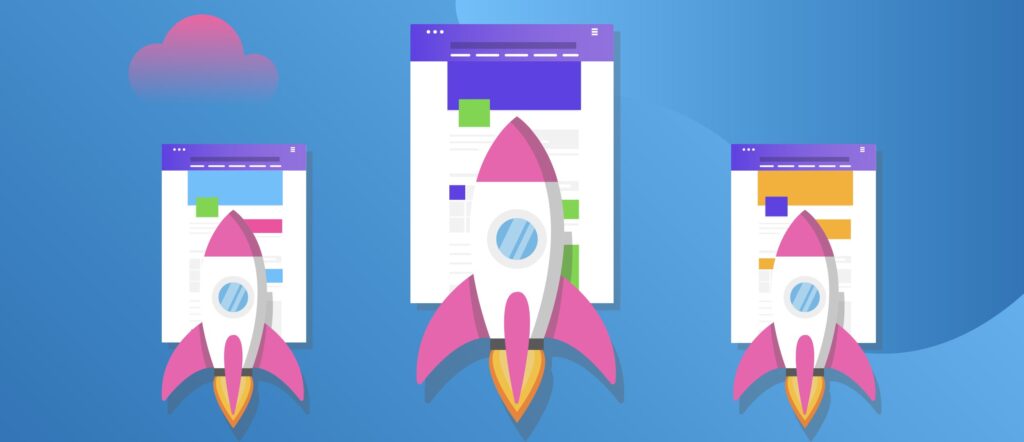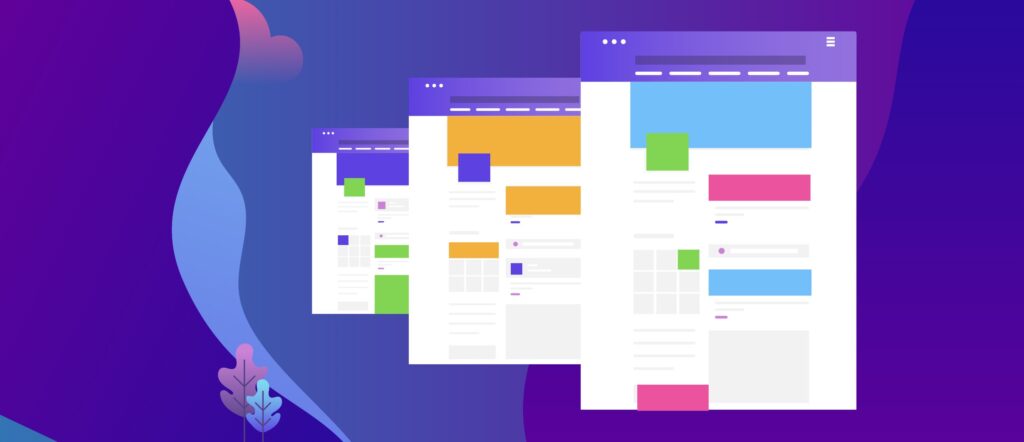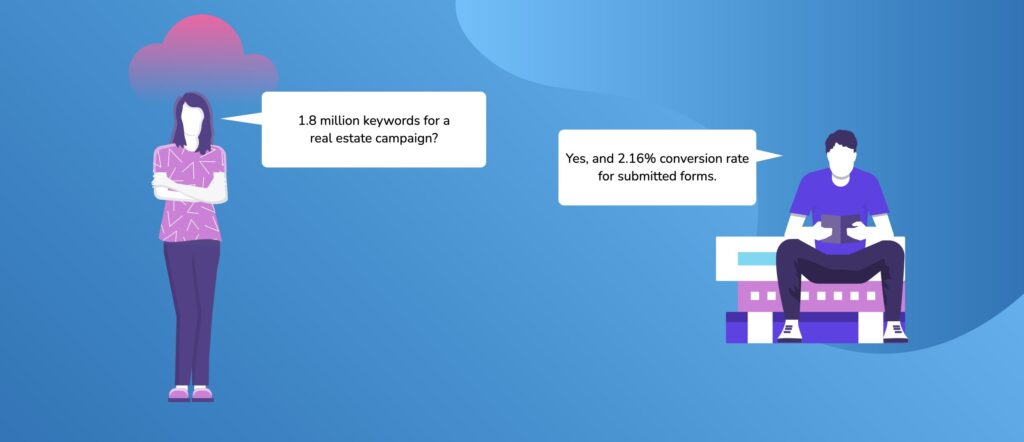
Consultation first, sales second – why this is also crucial for digital campaigns
Why is pre-purchase advice so important for customers?
Your customers need to make an informed buying decision. That’s why every customer journey begins with information gathering. Which solution from various possible ones is the right one for me? How do price/performance data differ between different manufacturers? Which features or services should I look out for, and which of these do I personally find important? What else can the vendors do? Are there rankings or tests, and what about service and guarantees? How do I get a non-binding offer?
The higher the quality or complexity of your product or service, the more questions there are. And the more crucial it is to offer convincing professional advice. If you have nationwide branch shops with qualified staff and all your customers come to your shop – congratulations. In all other cases, the advice must work digitally.
Maybe you have a blog where you answer a lot of questions. That is a good thing. However, if you need to reliably build high reach, then you need an SEA campaign that helps drive out the competition in the shark tank. In that case, it hardly makes any sense to refer to the blog homepage (“Why don’t you look for your answer yourself – it’s here somewhere”).
80% of search traffic is search for information
Neuromarketing experts point to the fact that buyers still want to justify their preferences even after deciding on a product – they call this behaviour post-rationalisation. In this way, they justify even unreasonable purchase decisions by gathering more circumstantial evidence to present them as reasonable: “It has more pixels” or “An SUV is simply safer for our children” or more exotic ones like “It has a better ab/xy performance ratio if you modify the factory settings”.

This circumstance and the initial interest in general information explain the results of a study by Penn State’s College of Information Sciences and Technology. According to the study, a full 80 per cent of search traffic is informational in nature, i.e. searching for information.
The “Buy Now” button misses the point in most cases
Nevertheless, the vast majority of SEA campaigns are transactional in nature. That means they want to sell something directly. And they can’t do otherwise. This is mainly for technical reasons. Because such an ad can refer directly to a content in the shop or to a form. And this is despite the fact that we have seen that spontaneous purchases are not to be expected in many cases. But this is the only technically possible way.
What should an advertisement with an advisory offer refer to? As we have seen, the blog is not a viable solution here. More on this in a moment.
Sales Funnels in SEA Campaigns
So-called sales funnels are an important part of a successful marketing strategy in which potential customers are guided through different stages of the buying decision. The sales funnel in SEA starts with a company’s ad in search networks such as Bing or Google to draw attention to products or services. In the next step, potential customers are encouraged to obtain further information about the products. For example, they can request a quote or sign up for a newsletter. Once they start to engage with the company in more detail, they can become qualified leads. At this point, companies eventually try to convert the leads by turning them into customers. The final stage of the sales funnel is thus the purchase of the product or service.
Why individual advice in SEA campaigns has been difficult so far
Particularly in the case of products requiring special advice or explanation with several subject areas, which often also incur higher costs, satisfactory coverage with an SEA campaign has been difficult up to now. The information content is generally static and limited to a few central points on a landing page in order to nevertheless achieve as many leads and ultimately sales as possible.
The reason for this is relatively simple: in order to be able to really fully satisfy the visitors’ need for information, there would have to be a separate landing page for each topic area – which is reflected in the keywords used. However, this can quickly go beyond the scope, making the landing page a bottleneck at this point.
How lyftyfy provides broad and highly relevant coverage
lyftyfy solves this bottleneck by generating not only a separate ad for each keyword combination at the push of a button, but also a separate landing page. These landing pages are dynamic. They do not simply replace the incoming keywords per variable. Rather, they load completely individual content blocks at keyword level. These can be texts, images or even user-defined HTML code.
In this way, you can generate your own content for any number of keywords and combinations of keywords, so that the landing pages, although created at the push of a button, look as if they were tailor-made for the searcher, just like all keyword combinations. This ensures the perfect answer on your landing pages for every information need of the searcher.
Better KPIs through the perfect echo
So in practice, you not only increase the CTR through your custom-fit ad, but subsequently also your conversion rate, which is what you are ultimately interested in in your sales or lead campaign – your campaign responds like an echo to the search query. Users specifically meet your information needs on your landing pages and thus also have dwindling incentives to look for a more suitable answer on other pages. On the contrary, your landing page is highly likely to deliver the best answer of the day – no matter how specific or unique the original search may have been.
So, for example, if someone is looking for an in-ear hearing aid in Kassel and someone else is looking for a behind-the-ear hearing aid with Bluetooth in Bremen, you can provide both users with equally individualized content – such as listing the advantages and disadvantages of the two hearing aids in one content block with images and accurate directions to the location in a second.
Google also thanks you for this interactive content marketing with a higher quality score, which affects the ranking of your ads and thus also the cost per click you pay for your ad. Depending on user behaviour, this can also be easily optimised in the current campaign as soon as popular topic areas emerge from the search volume.
Interested? Request a free demo now
lyftyfy opens a door for unlimited variety on your landing pages that has never existed before. Create your customized answers for every search term of your target group today. It’s as exciting as it is complex. If you are interested, we would be happy to present our tool to you in more detail – perhaps even with a concrete case study that is relevant to you.


